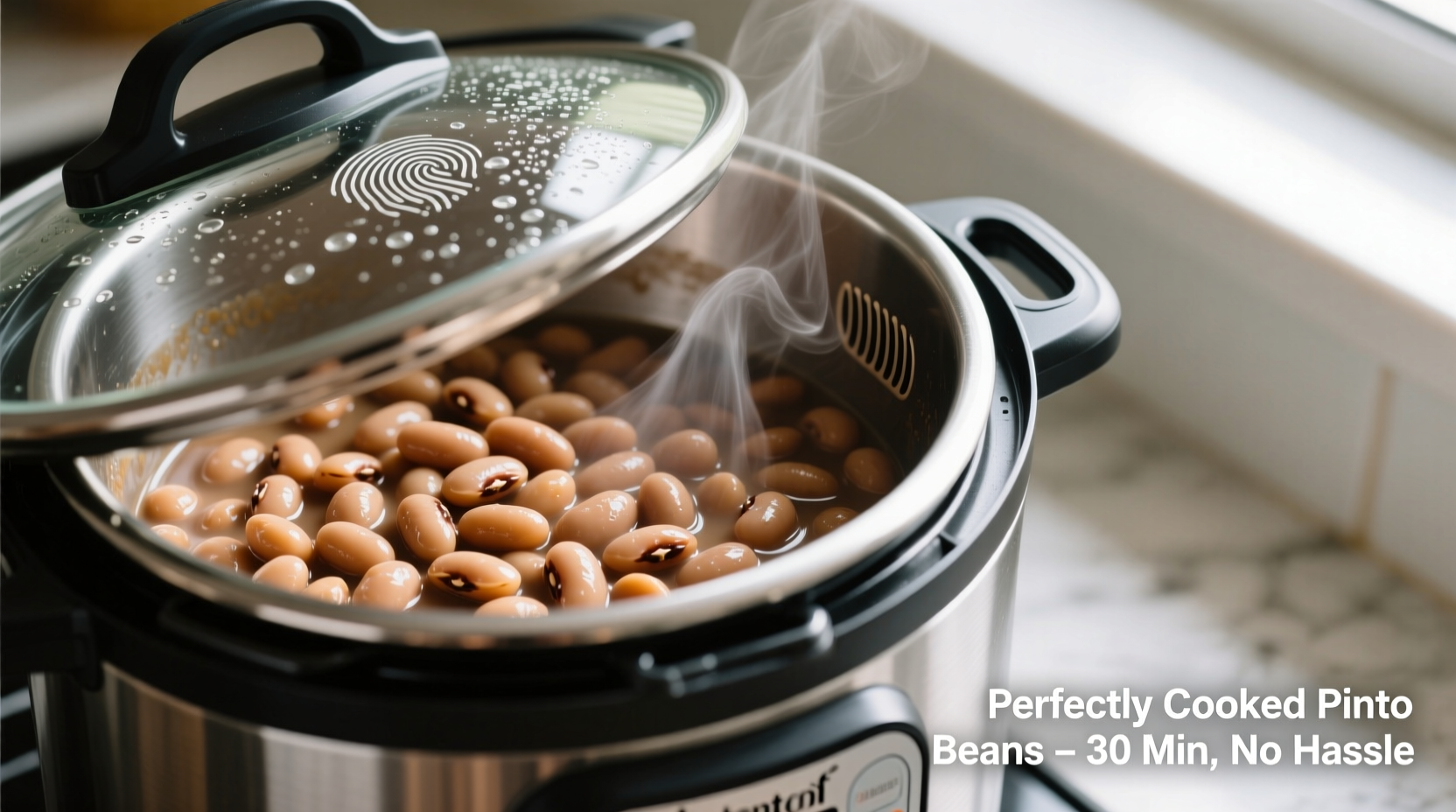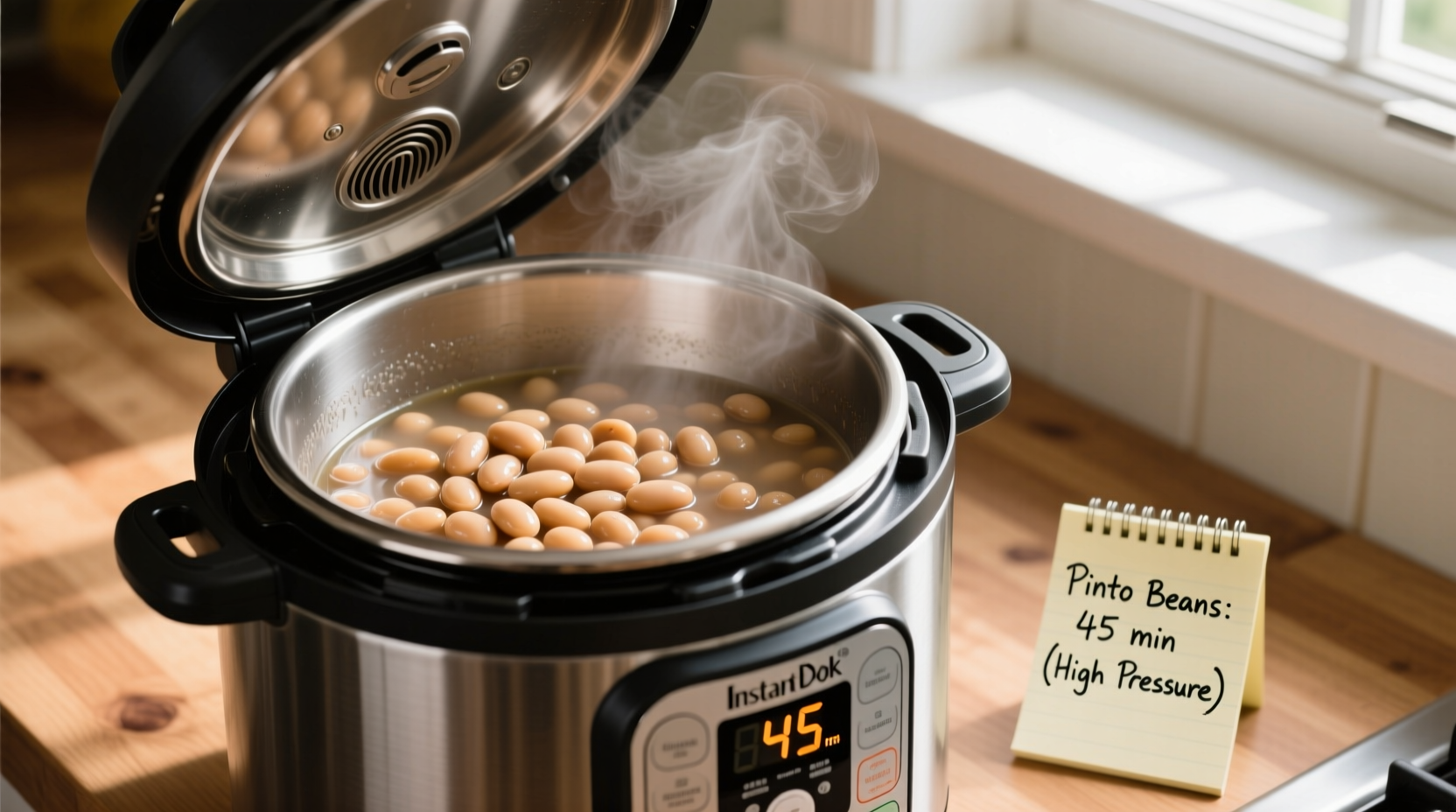Discover how to make creamy, flavorful pinto beans in your Instant Pot without the lengthy soaking process traditional methods demand. As a Latin American cuisine specialist who's documented bean preparation across the continent, I've perfected this technique through years of testing in both home kitchens and traditional cooking environments. You'll save 80% of your cooking time compared to stovetop methods while achieving that ideal balance of firm-but-tender texture that makes pinto beans so versatile.
Why Instant Pot Pinto Beans Outperform Traditional Methods
Pressure cooking transforms dried pinto beans from rock-hard to perfectly tender in a fraction of the time. The high-pressure environment allows water to penetrate the bean's tough exterior at temperatures above boiling point, breaking down complex carbohydrates while preserving nutritional value. According to USDA cooking guidelines, pressure cooking retains more nutrients than extended boiling methods.
| Cooking Method | Prep Time | Total Time | Texture Result |
|---|---|---|---|
| Instant Pot (no soak) | 5 minutes | 45 minutes | Uniformly tender |
| Stovetop (soaked) | 8 hours | 2 hours | Inconsistent |
| Canned beans | 0 minutes | 5 minutes | Often mushy |
Essential Preparation Steps for Perfect Results
Before you start cooking, proper preparation ensures consistent results. Unlike traditional methods, Instant Pot pinto beans don't require soaking, but they do need thorough rinsing. Place 1 cup of dried pinto beans in a colander and rinse under cold running water for 1-2 minutes, removing any debris or damaged beans. This simple step prevents the "burn" error that often frustrates new pressure cooker users.
The water-to-bean ratio is critical for optimal texture. For unsoaked pinto beans, use a precise 3:1 ratio (3 cups water to 1 cup beans). Adding too little water risks scorching, while excess water creates overly soupy beans. For those at higher altitudes (above 3,000 feet), increase cooking time by 5-10% as recommended by the National Center for Home Food Preservation.

Step-by-Step Cooking Process
Follow these precise steps for foolproof pinto beans every time:
- Add rinsed beans and water to your Instant Pot
- Include 1 teaspoon salt (added before cooking prevents toughening)
- Secure lid and set valve to "Sealing" position
- Select "Manual" or "Pressure Cook" mode at high pressure for 25 minutes
- Allow 15 minutes natural release (critical for texture development)
- Quick release any remaining pressure
- Drain excess liquid if desired, reserving cooking liquid for recipes
The natural release period is non-negotiable for proper bean structure. During this 15-minute window, residual heat continues gentle cooking while allowing starches to stabilize. Skipping this step results in beans that are either undercooked or disintegrate when stirred. This technique aligns with findings from America's Test Kitchen, which demonstrated that gradual pressure reduction preserves bean integrity.
Troubleshooting Common Issues
Even with perfect technique, variables can affect your results. Here's how to handle common challenges:
- Undercooked beans: Return to high pressure for 5-7 minutes with 1 cup additional water
- Overcooked beans: Reduce next cooking time by 5 minutes or shorten natural release
- Burn error: Always deglaze pot after sautéing aromatics; ensure sufficient liquid
- Too soupy: Simmer uncovered after cooking to reduce liquid
Acidic ingredients like tomatoes or vinegar should be added after cooking, as they interfere with the softening process. This scientific principle, documented by the Journal of Food Science, explains why beans won't soften properly when cooked with acidic components.
Flavor Enhancement Techniques
Elevate your basic pinto beans with these professional techniques:
- Add 1 bay leaf and 2 garlic cloves during cooking for subtle depth
- Include 1 teaspoon cumin at the end for authentic Latin American flavor
- Finish with a splash of reserved cooking liquid and fresh lime juice
- For smoky flavor, add 1/2 teaspoon chipotle powder after cooking
Professional chefs often save 1/2 cup of cooking liquid to adjust consistency in final dishes. This starchy liquid acts as a natural thickener while adding depth of flavor - a technique I've observed in traditional Mexican kitchens from Oaxaca to Mexico City.
Storage and Reheating Guide
Proper storage maintains texture and flavor for future meals:
- Cool completely before storing (within 2 hours of cooking)
- Store in airtight containers with 1/2 cup cooking liquid
- Refrigerate for up to 5 days or freeze for 6 months
- Reheat gently on stove with small amount of water to restore moisture
When freezing, portion beans into 1.5 cup servings (standard recipe size) for convenient future use. Thaw overnight in refrigerator before reheating for best texture retention. This storage method follows FDA food safety guidelines for cooked legumes.











 浙公网安备
33010002000092号
浙公网安备
33010002000092号 浙B2-20120091-4
浙B2-20120091-4